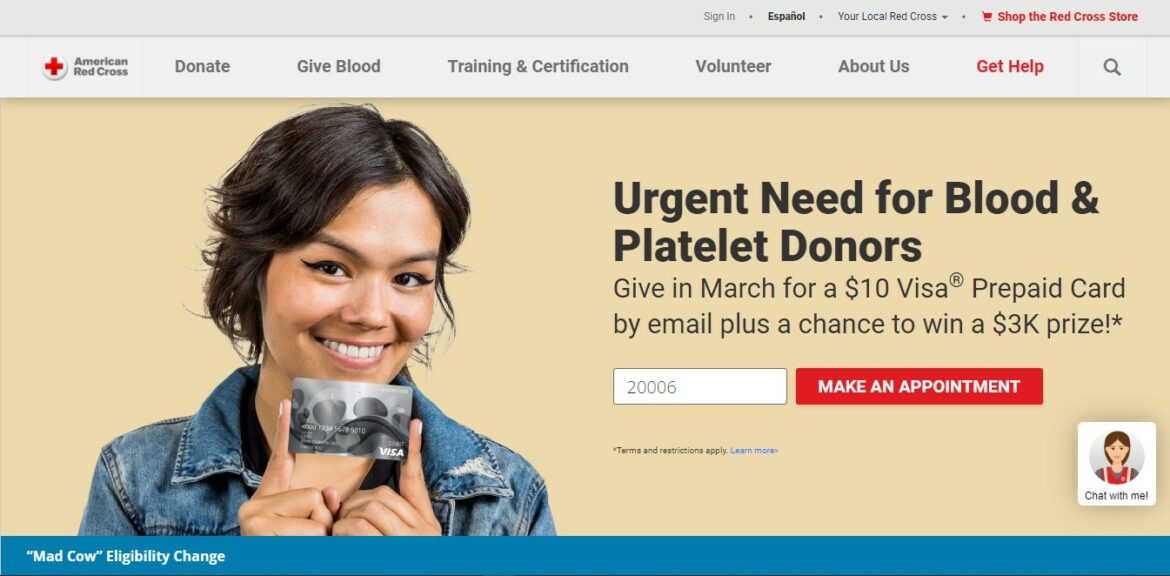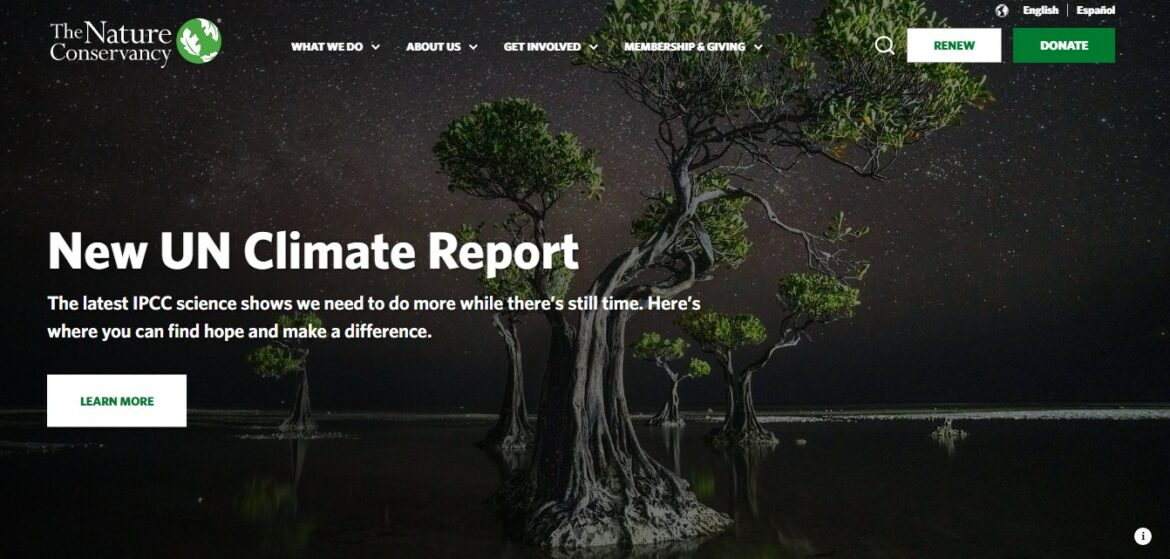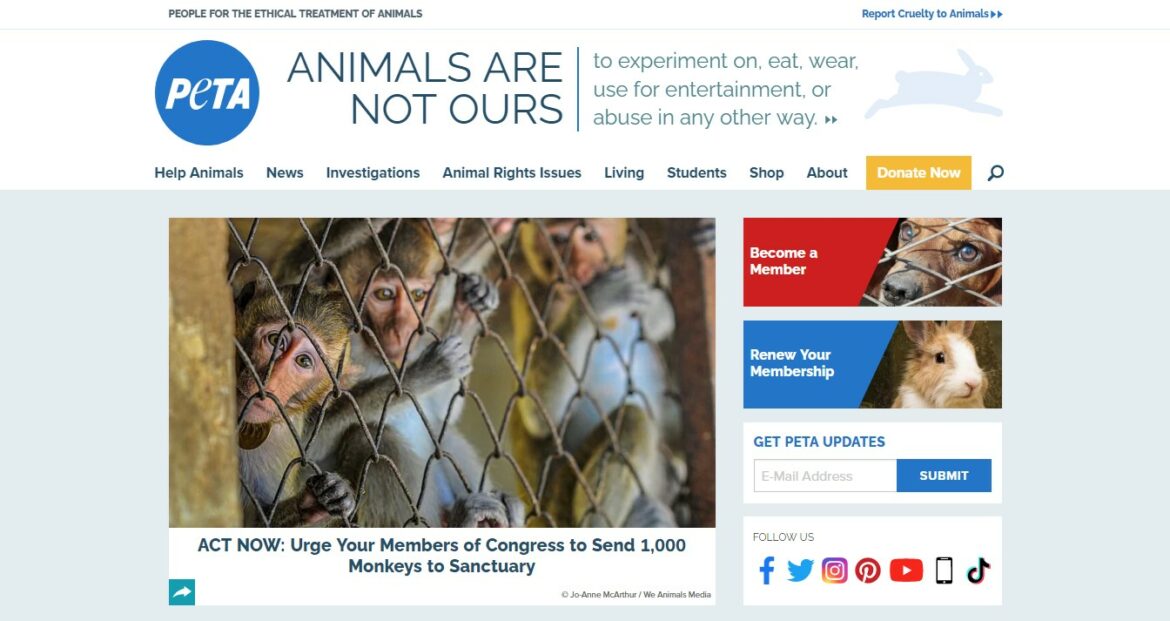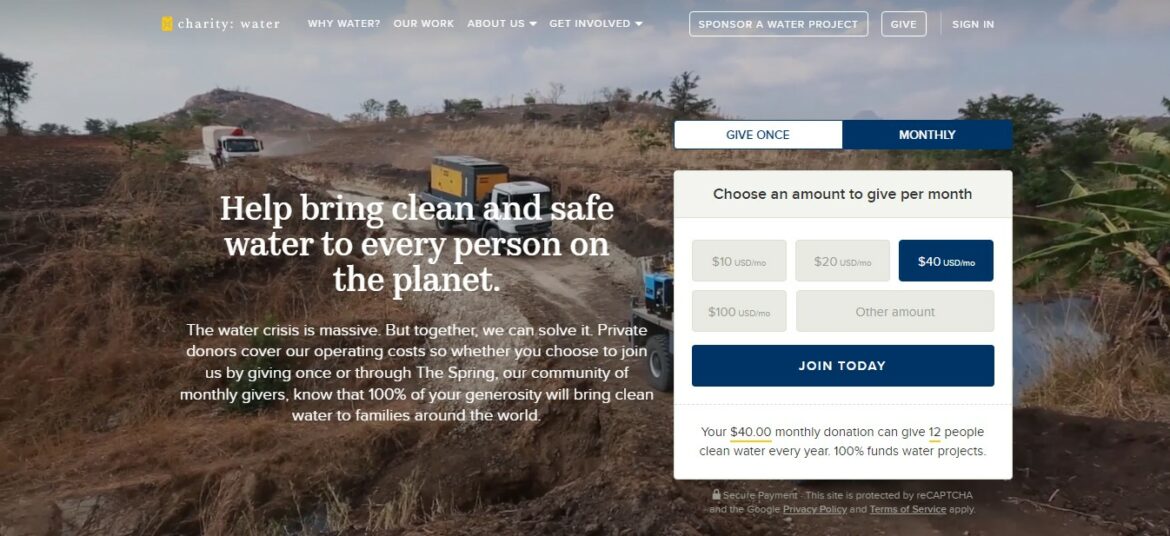|
Getting your Trinity Audio player ready...
|
Establishing a solid brand identity can enhance your ability to form meaningful relationships with potential donors. That way you encourage their support towards your mission as a nonprofit.
Branding is an effective tool for nonprofits to help draw attention to their cause and objectives. In this day and age, it’s hard to stand out as a nonprofit among the competition. The only way to keep your head above the water is by having a well-defined brand.
A brand strategy is essential to helping nonprofits attract and retain donors, and build relationships with key stakeholders. It serves as a mission statement for how the organization wants to be perceived in the marketplace.
Take the example of WWF (World Wide Fund for Nature). They have created such a strong brand identity that almost everyone knows their iconic black and white panda logo by heart.
By creating a strong personality around their core values and consistent messaging, they have managed to become an authority in the environmental protection field. This can be seen in their social media posts, website content, blog posts, and campaigns. All of which are inspiring and empowering.
By setting this type of example, other non-profits can get an idea of how branding can help them gain exposure to their goals and causes.
In this article, we will go over what branding is and why building a brand strategy is important for nonprofits.
Brand Strategy
A brand strategy is a comprehensive plan that outlines how a business will position, differentiate, and communicate its brand to target audiences to achieve its business goals.
What is Brand Strategy for Non Profits?
A brand strategy is the foundation of any successful nonprofit. It’s a plan that outlines how an organization will present itself to its donors and other stakeholders.
It should include the following elements mission statement, values, target audience, goals, objectives, and messaging. A strong brand strategy helps nonprofits build trust with their audiences and encourages ongoing support for their cause or mission.
At its core, a brand strategy defines who you are and how you want to be perceived. It’s about creating an emotional connection with your audience that goes beyond the facts and figures of what you do.
Why is a Brand Strategy Important for Nonprofits?
Having a strong brand strategy is important for any nonprofit because it allows them to stand out among the competition. It helps to create trust with donors and encourages them to donate or volunteer their time. Additionally, it helps to define the values of the organization and create a consistent message across platforms.
The brand strategy also serves as a roadmap for getting your message out in the world. It can help guide your content creation and marketing efforts, so that you are always communicating in line with your mission and values.
By having a strong brand strategy, you can be sure that your organization is sending out a consistent message and leaving an impression on those it serves. This can lead to more donations, volunteers, and attention for your cause.
A brand strategy offers numerous benefits to nonprofit organizations. Having a solid brand identity helps create trust and establishes credibility. These are two of the most important factors when it comes to fundraising. Furthermore, having a clearly defined brand allows nonprofits to better communicate with their target audiences and potential donors.
Here are five ways a strong brand strategy can benefit nonprofits:
1. Increased Awareness and Recognition
A well-defined brand message can help a nonprofit differentiate itself from other organizations and emphasize its distinct mission and values.
As a result, the increased visibility generated can lead to greater awareness and recognition among potential donors, supporters, and partners, ultimately contributing to the organization’s impact on the community.
With a brand strategy you can create a well defined marketing plan that will allow you to have constant feel in your marketing materials. You can also choose the right marketing techniques to drive online donations, and your overall organizational strategy.
All this mentioned a made possible by crafting a well defined nonprofit branding strategy your organization can grow with. This means more funds coming in, more support and more volunteers.
2. Stronger Fundraising Efforts
Effectively branding your nonprofit organization can also help boost fundraising efforts. A strong brand message encourages donors and supporters to connect with a nonprofit’s mission and feel more compelled to donate or contribute.
By effectively communicating the impact of donations, a nonprofit can foster long-term relationships with donors and potential supporters.
In order to succeed in the competitive world of non-profit organizations, you need to be a mission driven organization. It is important to develop a strong brand that accurately reflects the mission and values of the organization.
A unified brand can help the nonprofit stand out from its competitors and leave a lasting impression on potential donors. People want to donate to organizations that evoke an emotion or sense of purpose, so demonstrating your unique identity will encourage potential donors to pay closer attention.
Strong branding can also lead to increased engagement from followers on social media as well as from potential donors. Social media is a powerful tool for non-profit organizations and having a consistent message across all platforms will appeal more strongly to fans and followers.
It also encourages people to join conversations, participate in campaigns, and ultimately attract financial donations. The goal is to create a brand story that resonates with people and inspires them to donate money or volunteer.
3. Connect with Your Target Audience
A well-crafted brand strategy can help nonprofits connect with their target audience on a deeper level. Additionally, by understanding the needs and wants of your target audience, you can craft messages that resonate with them, which will create an emotional connection that encourages them to support your cause.
Additionally, having a brand message that speaks to the values of your target audience can help boost engagement and donations.
Creating a strong brand identity also helps to create an emotional connection with potential donors and engages them in the mission of the organization.
Branding can be used to tell a story or evoke an emotion that resonates with donors, which can lead to increased engagement and donations. Having a recognizable brand also makes it easier for people to remember your nonprofit when it comes time to make a donation.
4. Improved Partnerships and Collaborations
Having a strong brand strategy can also help nonprofits form partnerships with other organizations, businesses, and public figures. Having a recognizable brand identity makes it easier for potential partners to recognize the organization and its values.
The more people who are aware of your organization, the better your chances of forming meaningful collaborations that will help advance the mission of your nonprofit.
For example, a nonprofit focused on environmental sustainability could partner with a local business that shares its commitment to sustainability.
By aligning their brands and messaging, they could create a campaign that promotes environmentally-friendly practices and products, while also highlighting their shared values and commitment to the cause.
In addition to attracting partnerships, a strong brand identity can also help a nonprofit stand out and gain support from donors and volunteers. By clearly communicating its mission, values, and impact, a nonprofit can inspire others to get involved and support its cause.
Overall, building a strong brand identity is an important aspect of a nonprofit’s success. Furthermore, having credibility can attract partnerships and inspire support from donors and volunteers, all of which are essential for achieving their mission and creating a positive impact in the world.
5. Establish Credibility and Trust
Having a strong brand identity can help build trust and establish credibility with potential donors, supporters, and partners.
A well-crafted brand strategy helps to demonstrate that an organization is competent, reliable and has the resources to carry out its mission. This element of trust can be invaluable in gaining support for your nonprofit and inspiring people to contribute to your cause.
Developing trust and loyalty among supporters, volunteers, and donors is one of the most valuable assets a business can have.
Trust is extremely important when it comes to support and loyalty, as consumers who feel a sense of trust toward your organization will be more likely to invest their time, money, and energy in your offerings.
Achieving a level of trust and loyalty requires consistent effort, transparency, and communication focus over an extended period of time so that stakeholders fully understand how much you genuinely care about them and your vision.
When creating a brand identity for your nonprofit, it should always focus on building relationships with new and existing supporters, volunteers, and donors. Additionally, engagement is key to creating long-term loyalty.
By taking the extra step to reach out to your stakeholders, you can demonstrate that your organization values their opinion and feedback. This strengthens the bond between them and your company, ultimately leading to increased loyalty over time.
Not only does this create an authentic connection with supporters but also improves customer engagement and gives people more reason to trust your brand.
Setting up trustworthy relationships between supporters, and volunteer donors is essential for ensuring donor retention, repeat support as well as improved word-of-mouth marketing for your ’s reputation.
6. Increased Visibility
To increase visibility and recognition for a nonprofit, it’s important to establish a strong brand identity. A good marketing plan can also encourage participation and promote the organization’s values and purpose.
There are multiple ways to expand your nonprofit’s reach, including social media content creation, hosting events, and influencer engagement.
To create an effective and cost-efficient image that effectively communicates your message, it’s essential to understand the target audience of your communication campaign. Conducting qualitative and quantitative research can help identify best practices for crafting visual content that is both relatable and memorable.
Additionally, qualitative research explores emotional aspects to understand user experience preferences, whereas quantitative research offers data-driven trends and statistics that can provide additional insights.
After understanding user needs, communication materials like visuals or videos can be produced. These visuals should be intentionally designed to convey a meaningful message and be aesthetically pleasing.
Tailored visibility solutions can help promote your brand and tell your story consistently across all platforms. Therefore, this can lead to meeting ROI objectives more quickly and at a lower expense since fewer resources are needed for implementation once the strategic direction is established.
Examples of Successful Nonprofit Brand Strategies
The American Red Cross

Known for its signature red and white logo, and its mission to provide disaster relief and support to those in need, the American Red Cross has crafted a powerful brand identity that resonates with its target audience.
Through their messaging, they emphasize the importance of community and compassion – values that have helped to establish them as a leading organization in the nonprofit world.
The Nature Conservancy

The Nature Conservancy has used its brand to create an emotional connection with its audience by emphasizing its mission to protect nature and ensure a healthy future for all life.
Through their messaging, they focus on the beauty and importance of nature, while also highlighting their impact on communities across the world.
PETA

Recognized for its bold and controversial messaging, and its commitment to animal rights and welfare, PETA has become a leader in the animal rights movement.
Their powerful brand messages emphasize the importance of protecting animals and their habitats, while also encouraging people to get involved and support their cause.
Charity Water

Known for its clean and minimalist design, and its focus on bringing clean water to people in need, Charity Water has crafted a powerful brand identity.
Their messaging emphasizes the importance of access to clean water and its impact on communities around the world, inspiring others to get involved and make a difference.
Elements of a Strong Nonprofit Brand Strategy
Consistency
Ensure all messaging and design elements are aligned and consistent across all channels. This will help create a cohesive look and feel for your organization, making it easier for people to recognize and remember your brand.
Mission-Focused Messaging
Focus your messaging on the mission of your nonprofit, emphasizing why it’s important and how people can get involved. This will help connect emotionally with your target audience and inspire them to support your cause.
Authenticity
Communicate the nonprofit’s mission and values in an honest and transparent way. People want to know why your organization exists and how it’s making a difference in the world, so make sure your messaging is genuine and reflective of your organization’s true purpose.
Visual Identity
Develop a consistent visual identity for your nonprofit, including logos, colors, fonts, and imagery. This will help create a recognizable look and feel for your brand that resonates with people and makes it easy for them to remember your organization.
Emotional appeal
Connect with supporters on an emotional level to inspire action and support for your cause. Utilize storytelling to bring your mission to life and emphasize the importance of what you’re doing.
By focusing on consistency, mission-focused messaging, authenticity, visual identity, and emotional appeal, nonprofits can create a powerful brand that resonates with their target audience and inspires action.
Craft a Brand Strategy your Non Profit will Thrive with
Nonprofits face a lot of competition, so having a well-defined brand is crucial. Branding helps to create a unique identity in the minds of donors, clients, and the public, establishing trust and credibility. A brand strategy defines the mission statement for how the organization wants to be perceived in the marketplace.
An effective brand strategy can increase awareness and recognition, enhance fundraising efforts, improve engagement on social media, and help connect with the target audience.
By understanding the needs and wants of the target audience, nonprofits can craft messages that resonate with them, which can lead to increased engagement and donations.
Nonprofits can also create stronger partnerships and collaborations by sharing similar values and goals. Branding helps to highlight the organization’s unique mission and values, which can set them apart from other organizations.
By creating a cohesive brand story that resonates with people, they are inspired to take action and donate financially or volunteer time. Successful branding requires consistency across platforms to communicate a cohesive story that reinforces the mission and speaks to who the organization is.





